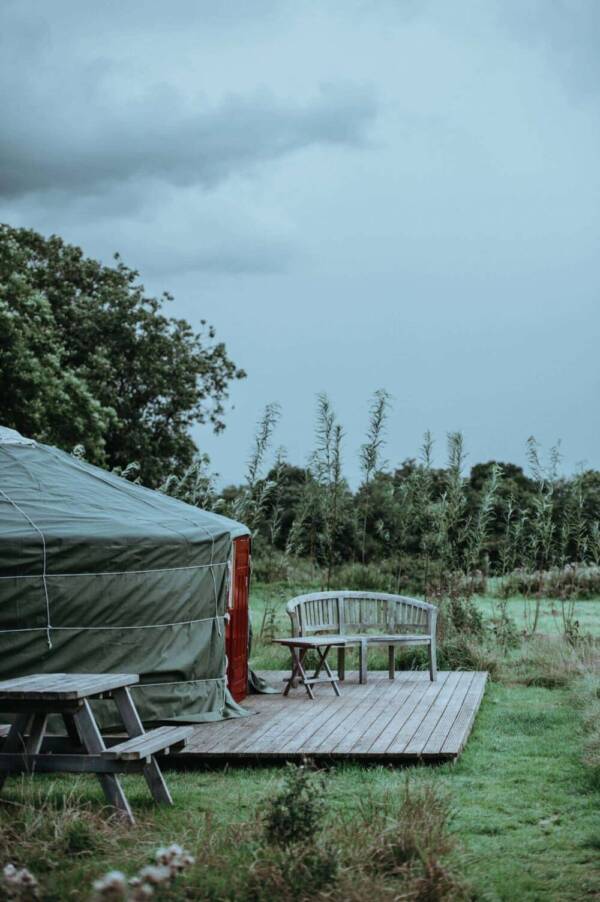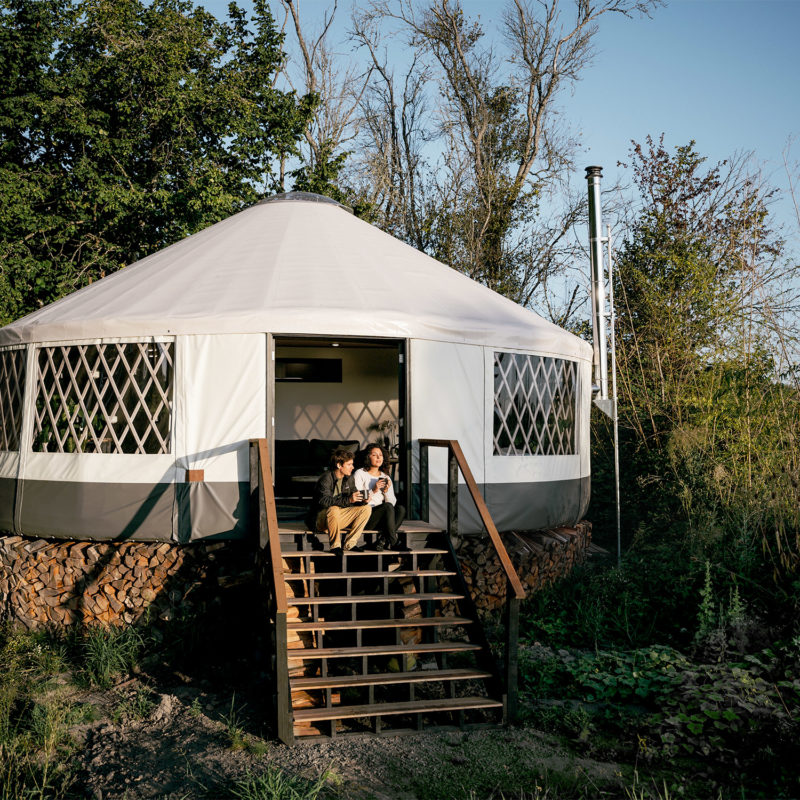Introduction
Yurts For Sale are an ancient form of portable home that has been used for thousands of years by nomadic peoples throughout Central Asia. In recent years, they have become increasingly popular in the Western world as an affordable, eco-friendly, and versatile housing option. In this article, we will explore the history, design, and popularity of these structures, as well as their many benefits and potential drawbacks.
History of Yurts
These dwellings, also known as gers or gers in Mongolian, have been used by nomadic peoples in Central Asia for over 2,000 years. The first dwellings were constructed using animal hides and wooden poles, which were arranged in a circular shape to create a sturdy and portable structure. Over time, the design of these structures evolved to incorporate more sophisticated materials, such as felt and canvas, as well as innovations in heating and ventilation.
Image Source: Sunset magazine.
https://www.sunset.com/home-garden/home-tours/modern-diy-foliage-filled-yurt.
Design of Yurts
These dwellings are typically circular or semi-circular in shape and consist of a wooden frame covered by a waterproof and breathable fabric, such as canvas or felt. The frame is usually composed of a lattice of wooden poles that are held together by ropes or straps, while the cover is secured to the frame using additional ropes or clips. These structures are designed to be portable and can be easily dismantled, transported, and reassembled in a different location.
The Ancient Origins of Yurts
The use of these dwellings, also known as ger in Mongolia, dates back more than a thousand years. These mobile dwellings have their roots in the Turkic and Mongol populations of Central Asia, where the harsh, nomadic lifestyle necessitated the need for homes that could be quickly put together, taken apart, and transported, These structures were cleverly made to accommodate these requirements.
Nomads had access to a lightweight, strong, and weatherproof shelter in the form of these dwellings, which were built from a lattice framework of bamboo or wooden poles and covered in layers of felt or cloth. Their round design not only allowed for efficient heating but also provided stability in windy situations, which was essential for travelers traveling over Asia’s vast steppes.
The World’s Most Beautiful Yurts
As nomadic groups and travelers dispersed their expertise and design ideas throughout Eurasia, the appeal of these structures transcended national boundaries. From the Mongols to the Turkic peoples, Kazakhs, Kyrgyz, and other groups, many cultures have adopted these structures or adaptations of them. They were adopted as symbols of a way of life that emphasized adaptation, mobility, and a strong relationship with the natural world.
Components of a Yurt
These dwellings consist of several key components, including:
- The frame: composed of wooden poles, lattice, ropes, or straps
- The cover: waterproof and breathable fabric, such as canvas or felt
- The door: typically a wooden or metal frame with a fabric or solid panel
- The crown: central circular opening at the top of the yurt, which provides ventilation
Image Source: Green Mountain Stays.
https://www.greenmountainstays.com/take-yurt-time-orp5b5d564x.
Modern Yurts: Merging Innovation and Tradition
These structures have seen an increase in popularity in recent years as modern designers and eco-aware people have realized their potential as sustainable and adaptable homes. Modern dwellings benefit from modern materials and technology while maintaining the circular shape and portability of their forebears. Traditional wooden frames have been replaced with steel or aluminum ones, and today superior textiles or insulating materials improve comfort and energy efficiency. Also, read more to know about Yurts for sale at: https://yurtspaces.com/yurts-maximize-your-buying-potential-with-our-comprehensive-guide/.
Popularity of Yurts
In recent years, these structures have gained popularity as a unique and eco-friendly housing option. They offer a low-cost alternative to traditional homes and can be used for a variety of purposes, such as guesthouses, studios, offices, and even primary residences. They are also highly customizable, with many options for size, shape, and interior design. They can be equipped with electricity, plumbing, and heating systems, making them suitable for year-round living in a variety of climates.
Benefits of Yurts
These structures offer many benefits over traditional homes, including:
Affordability: Compared to traditional homes, these dwellings are much more affordable to construct and maintain. They require less building materials, labor, and energy, making them a cost-effective housing option for those on a budget.
Portability: These structures are designed to be portable, which means they can be easily moved from one location to another. This makes them ideal for those who enjoy traveling or for those who need a temporary housing solution.
Eco-Friendliness: These structures are an eco-friendly housing option as they require less energy to heat and cool compared to traditional homes. They also have a smaller carbon footprint, as they use fewer resources during construction.
Versatility: These dwellings can be used for a variety of purposes, such as guesthouses, offices, studios, and even primary residences. They are highly customizable, allowing owners to create a space that suits their needs and lifestyle.
Connection to Nature: These dwellings provide an unmatched connection to the natural world thanks to their round shape and big windows. A deeper love of the natural world can be fostered via yurt living.
Drawbacks of Yurts
While these structures offer many benefits, there are also some potential drawbacks to consider. These include:
Limited Space: These dwellings are generally smaller than traditional homes, which can make it difficult to accommodate large families or groups of people. They also have limited storage space, which can be challenging for those with a lot of belongings.
Maintenance: These dwellings require regular maintenance, such as waterproofing and re-staining the wooden frame. This can be time-consuming and costly, especially for those who live in areas with harsh weather conditions.
Permits and Zoning: In some areas, these structures may not be legal for use as a primary residence or may require special permits or zoning requirements. This can make it challenging for those who want to live in a yurt full-time.

https://design-milk.com/do-it-yurtself-a-modern-yurt-you-can-build-yourself/.
Conclusion
People from all over the world are still fascinated by yurt because of their lengthy history and cutting-edge architecture. These mobile homes provide a look into a more straightforward, environmentally sustainable style of life at a time when sustainability and adaptability are highly desired. These structures are a monument to the ongoing attraction of creative design and a link to our nomadic past, whether they are used as permanent houses or as distinctive retreats. These dwellings are an ancient form of portable homes that have become increasingly popular in the Western world. They offer many benefits over traditional homes, including affordability, portability, eco-friendliness, and versatility. However, they also have some potential drawbacks, such as limited space, maintenance requirements, and permitting issues. Overall, these dwellings are a unique and appealing housing option for those who value sustainability, affordability, and flexibility.
FAQs
Are yurts waterproof?
- Yes, these dwellings are typically covered with a waterproof and breathable fabric, such as canvas or felt, which provides protection from the elements.
How long do yurts last?
- With proper maintenance, these dwellings can last for decades or even centuries.
Can yurts be used for year-round living?
- Yes, these dwellings can be equipped with heating, insulation, and ventilation systems, making them suitable for year-round living in a variety of climates.
How much does it cost to build a yurt?
- The cost of building a yurt can vary widely depending on the size, materials, and level of customization. However, these dwellings are generally much more affordable than traditional homes.
Are yurts eco-friendly?
- Yes, these dwellings are an eco-friendly housing option as they require less energy to heat and cool compared to traditional homes.



